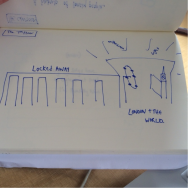It is useful here to quote from the social philosopher Martin Buber’s work on ‘cultural creativity’, which addresses this thorny relationship between creativity and culture directly (albeit not in the context of a university):
There are two aspects of culture: creativity and tradition. On the one hand, all cultural life is based on personal creative production. Culture derives its vitality from the plethora of creativity, and when in any culture the flow of innovation ceases, its power is annulled, since that culture lacks any power if it does not have the power of innovation, the power of constant renewal: or self-renewal. But on the other hand, none of these productions succeeds in developing a social character; that is to say, does not become an integral part of that culture, unless it enters into the process of give and take; if it does not become material which can conveniently be passed on and be joined to all productions created throughout the generations to become something paradoxical: a form of generality. There are two sides to culture: revolution and conservatism, i.e., initiative and routine existence. Each one alone has great historical value, but only the two together have cultural value. (Buber, 1962: 383-86, translated from the Hebrew)
As Buber goes on to observe, we should be particularly concerned about the possibility that the ‘state’ (for which we might also read any organisation or institution wielding power) might come to dominate the forces of social and cultural spontaneity.
 Buber highlights the importance of ‘dialogue’. As Eisenstadt (1992: 8) observes: “The central characteristic of situations producing creativity is the existence of a dialogue, of communicative openness”. It is interesting here to make a connection with the literature on ‘social creativity’ (Wilson, 2010) and the university ‘in the age of supercomplexity’ (Barnett, 2000). These emphasise the importance of ‘developing communicative tolerance’ as a key step in the process of enabling ‘social creativity’ – defined in terms of “our relational consciousness towards others and with the ‘other’” (Wilson, 2010, p. 373).
Buber highlights the importance of ‘dialogue’. As Eisenstadt (1992: 8) observes: “The central characteristic of situations producing creativity is the existence of a dialogue, of communicative openness”. It is interesting here to make a connection with the literature on ‘social creativity’ (Wilson, 2010) and the university ‘in the age of supercomplexity’ (Barnett, 2000). These emphasise the importance of ‘developing communicative tolerance’ as a key step in the process of enabling ‘social creativity’ – defined in terms of “our relational consciousness towards others and with the ‘other’” (Wilson, 2010, p. 373).
Other key steps include a) enabling interdisciplinarity; b) supporting collective critical reflection; c) facilitating engagement; and d) applying alternative methods. These themes represent an important backdrop to the development of the research design for this project.










